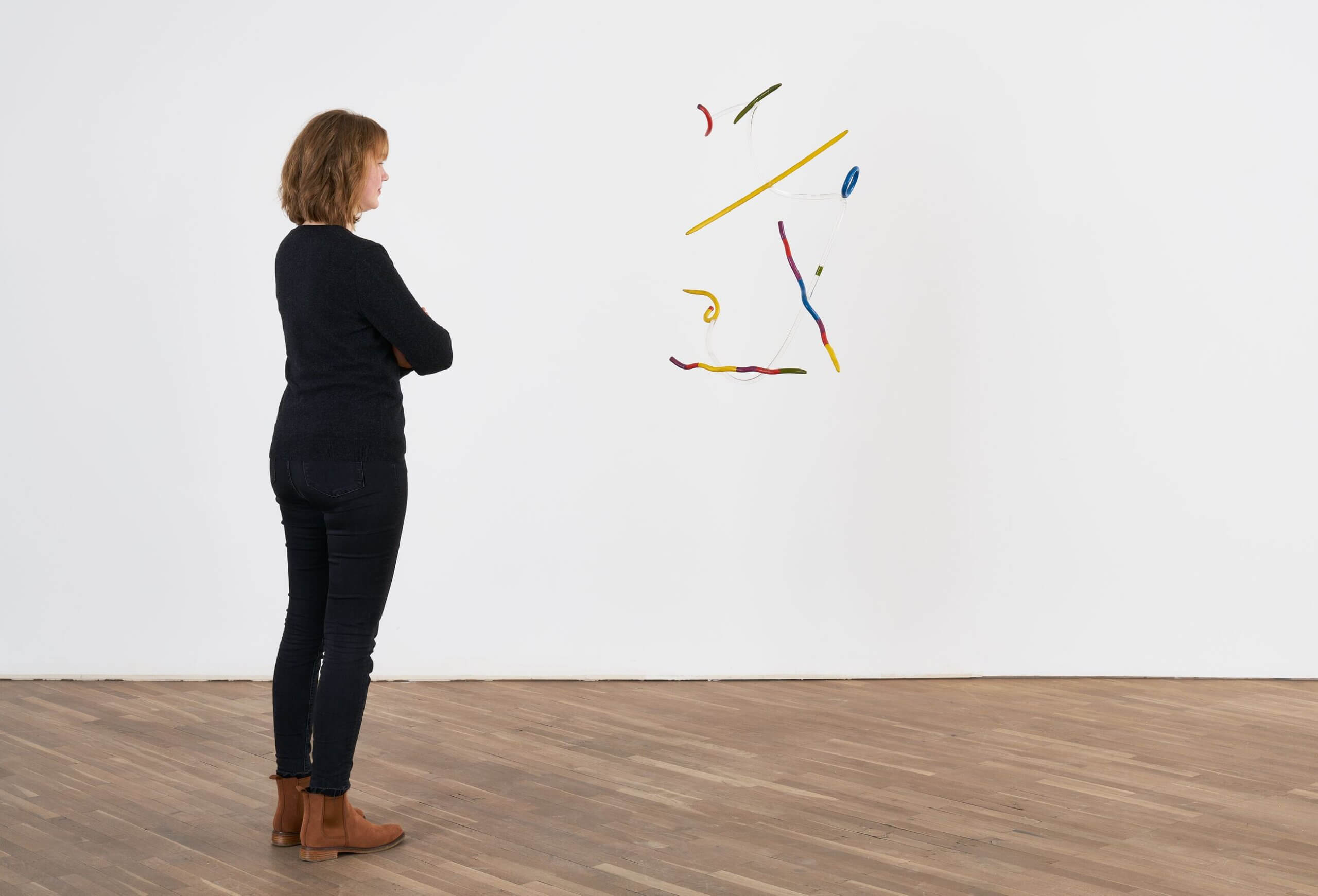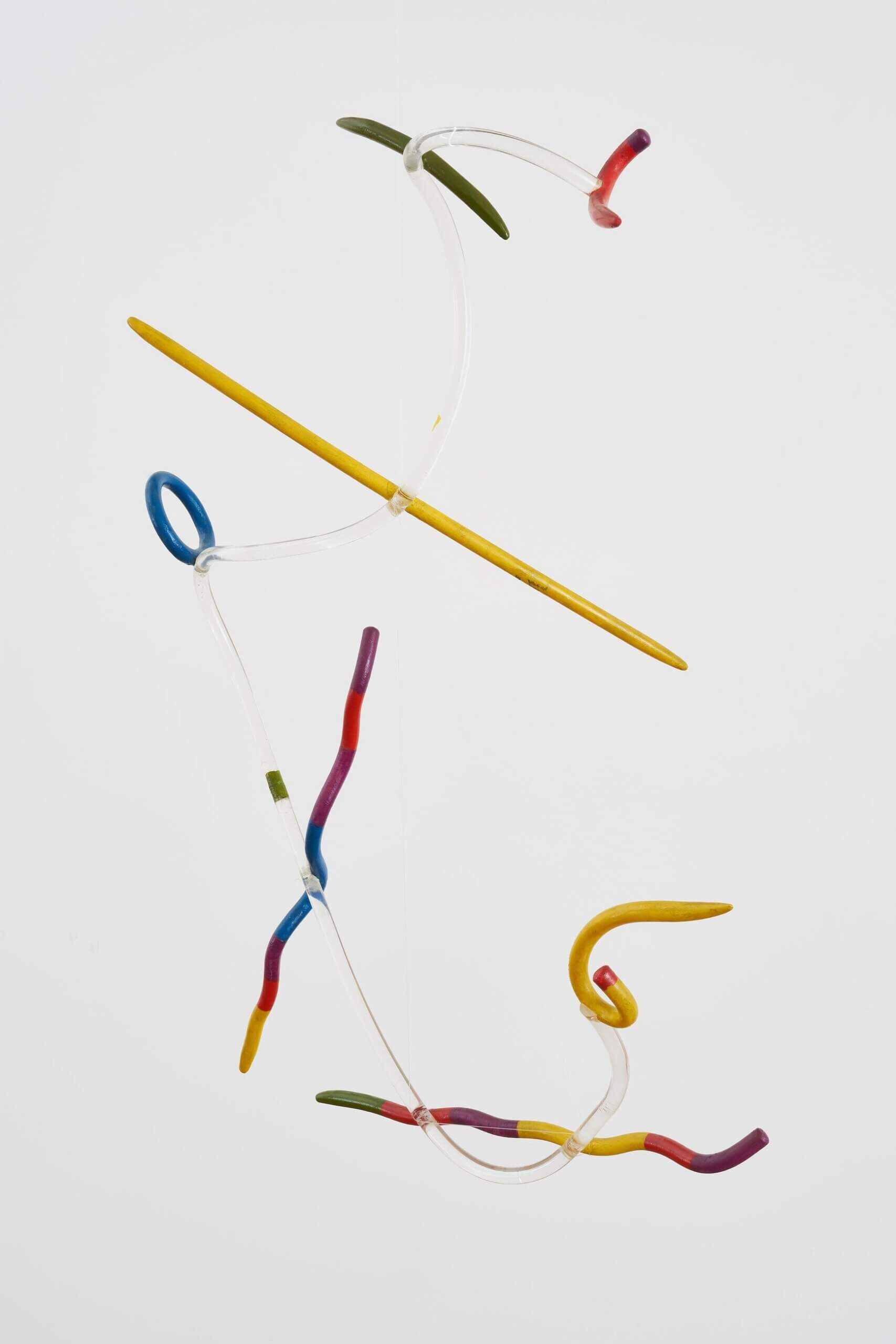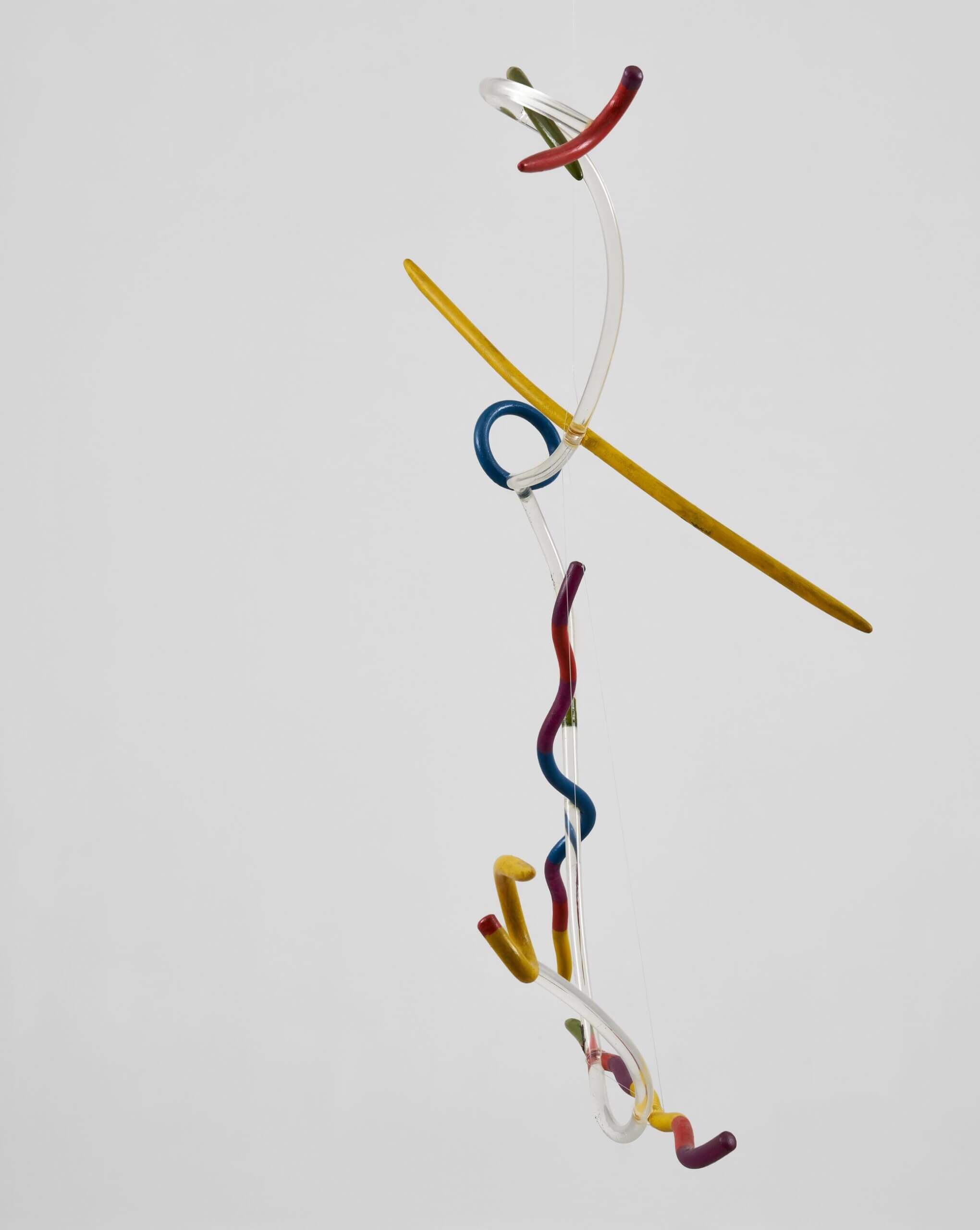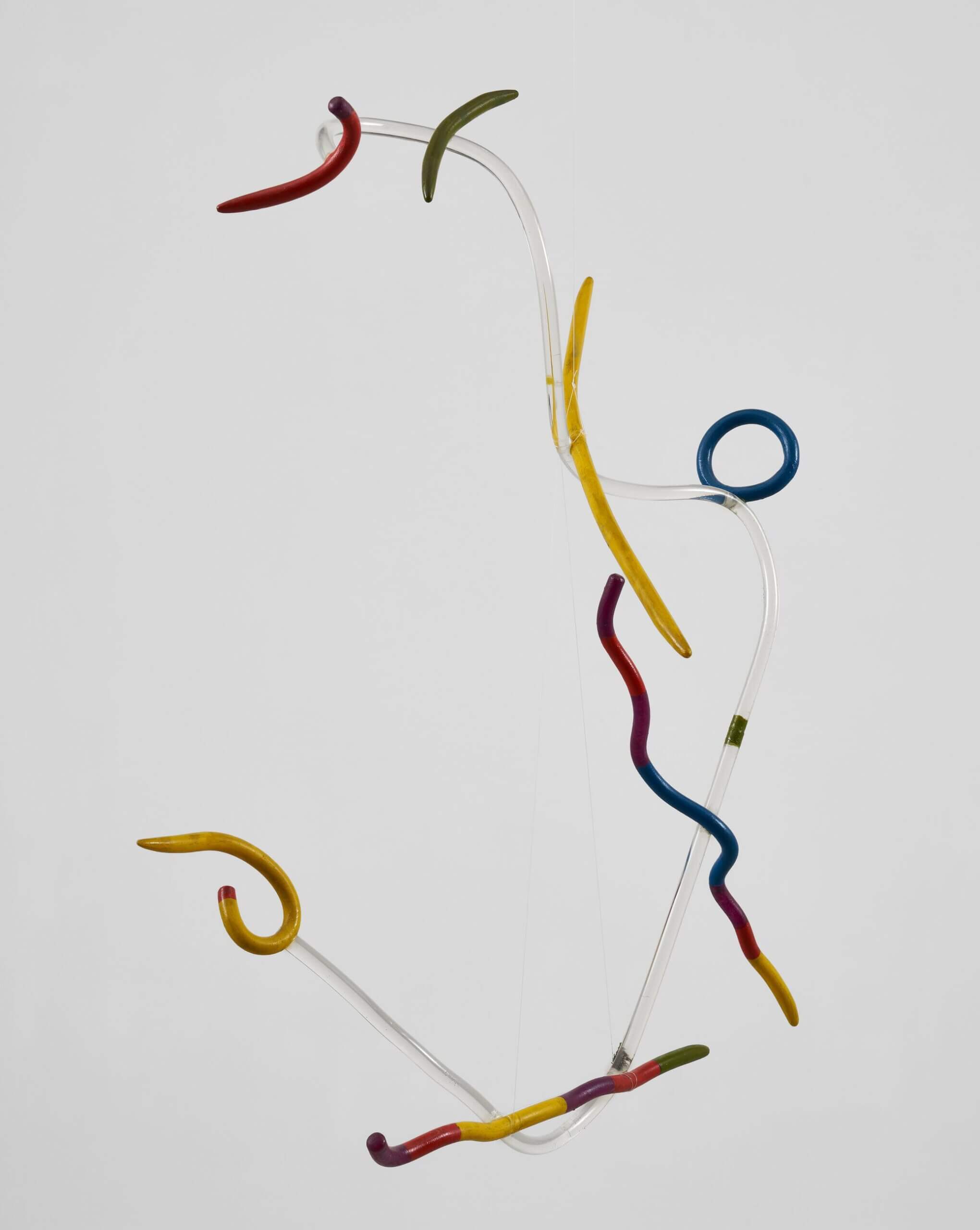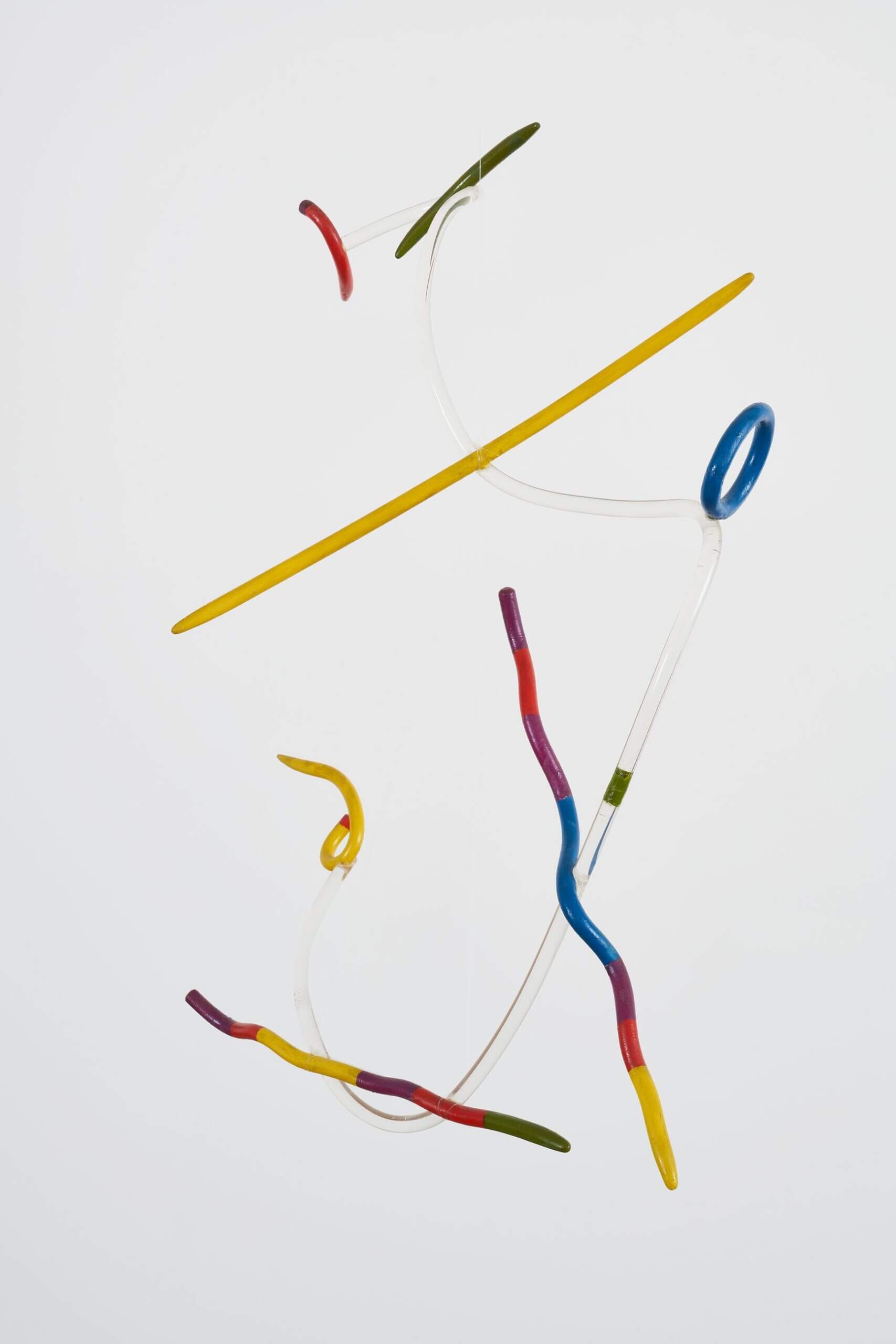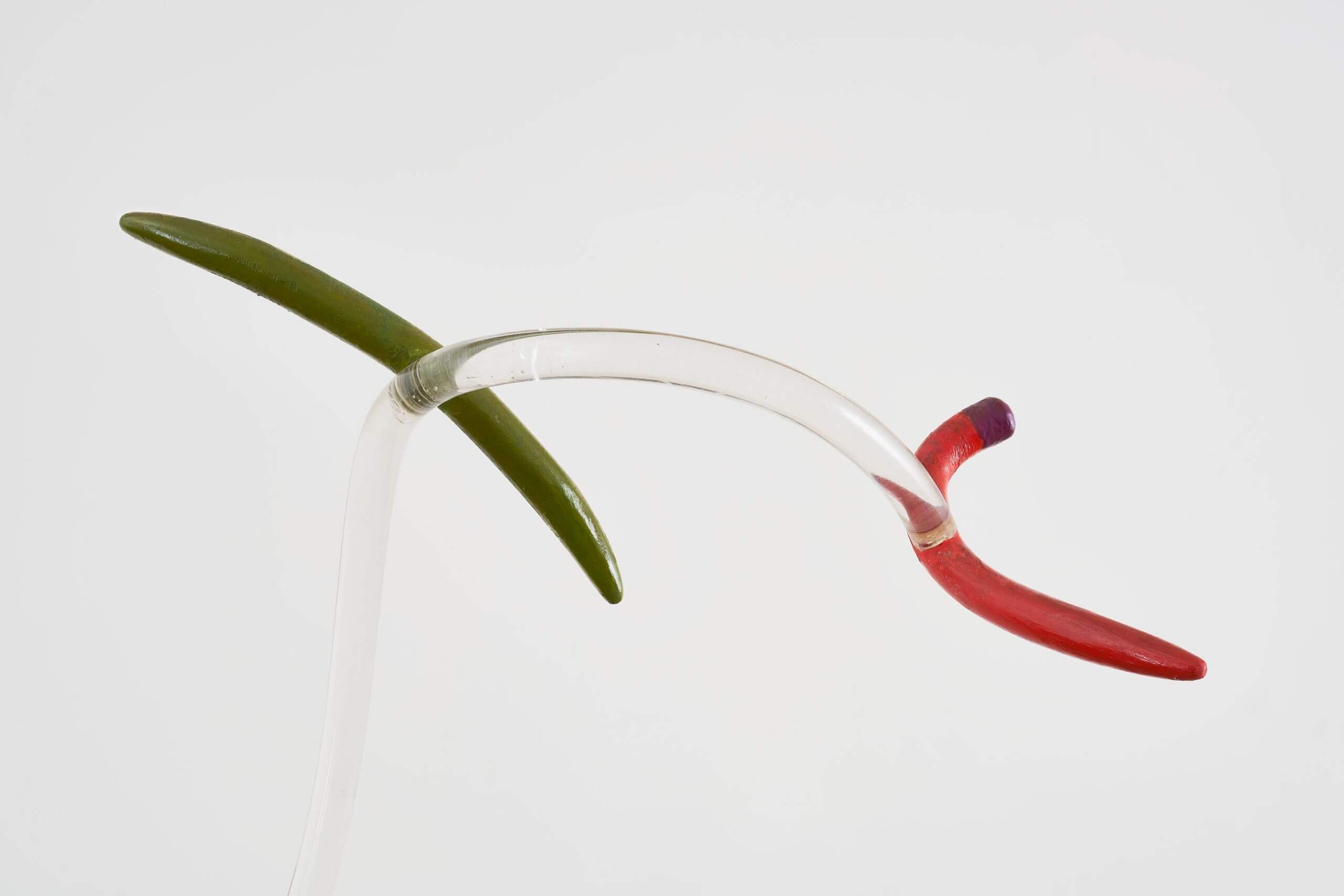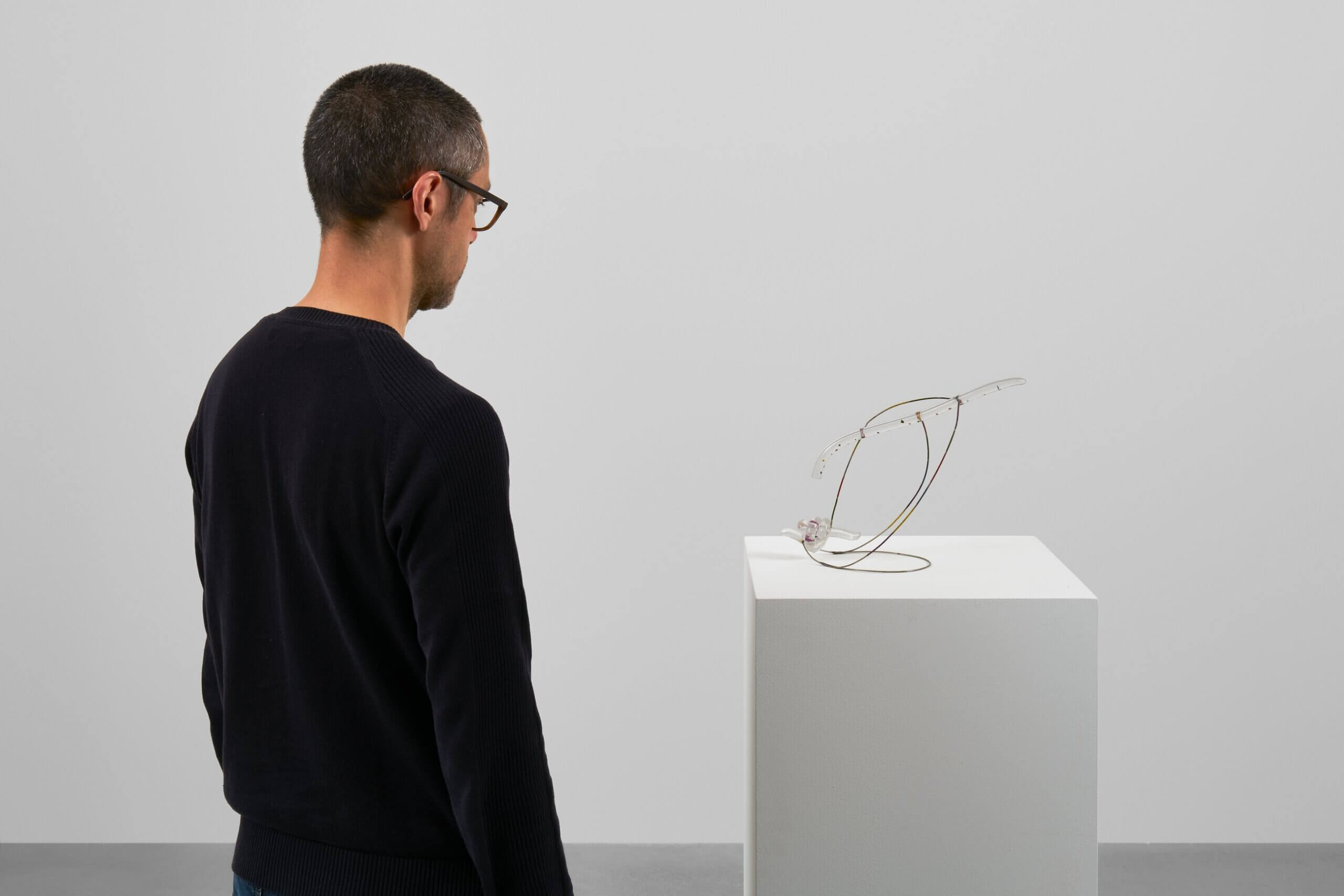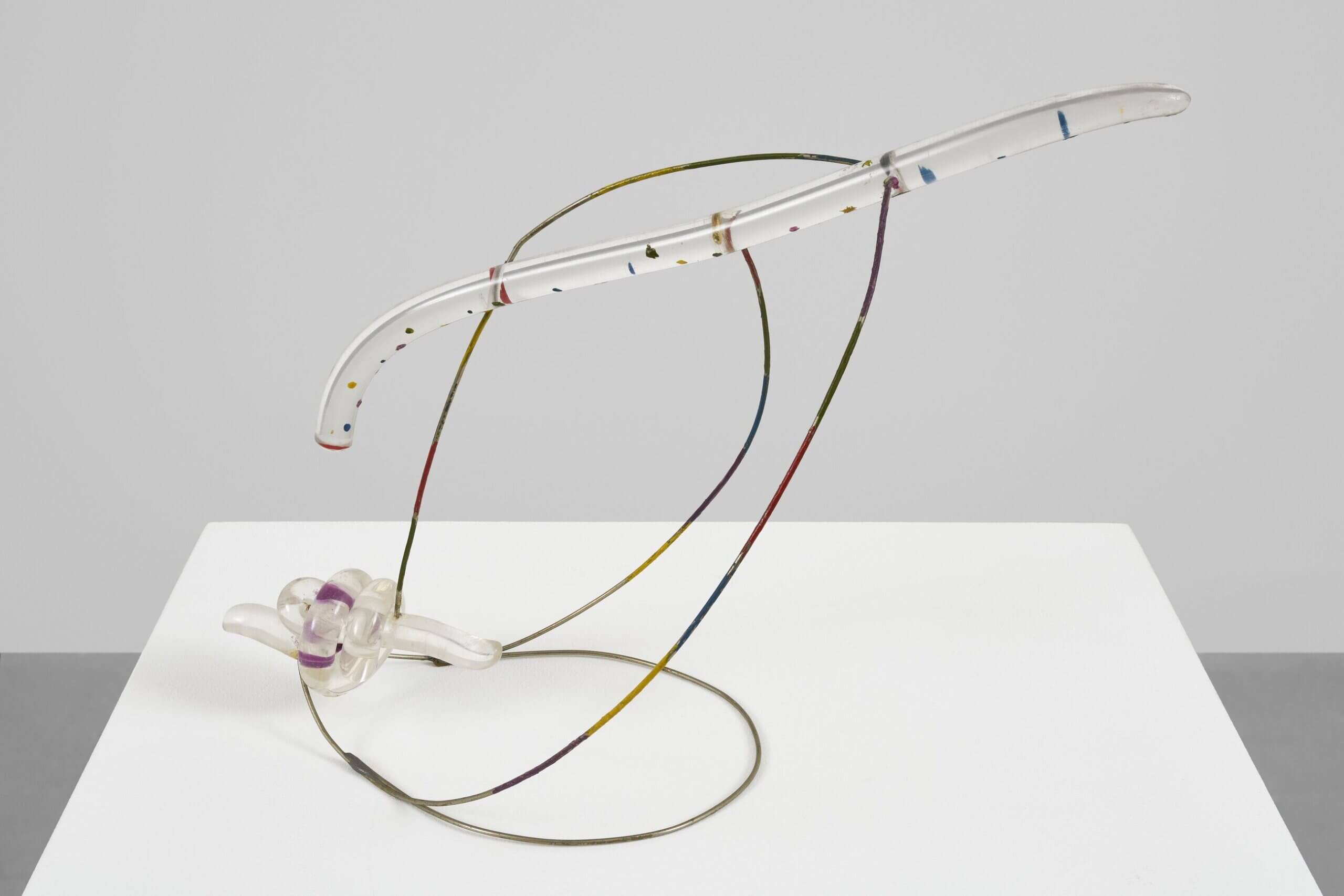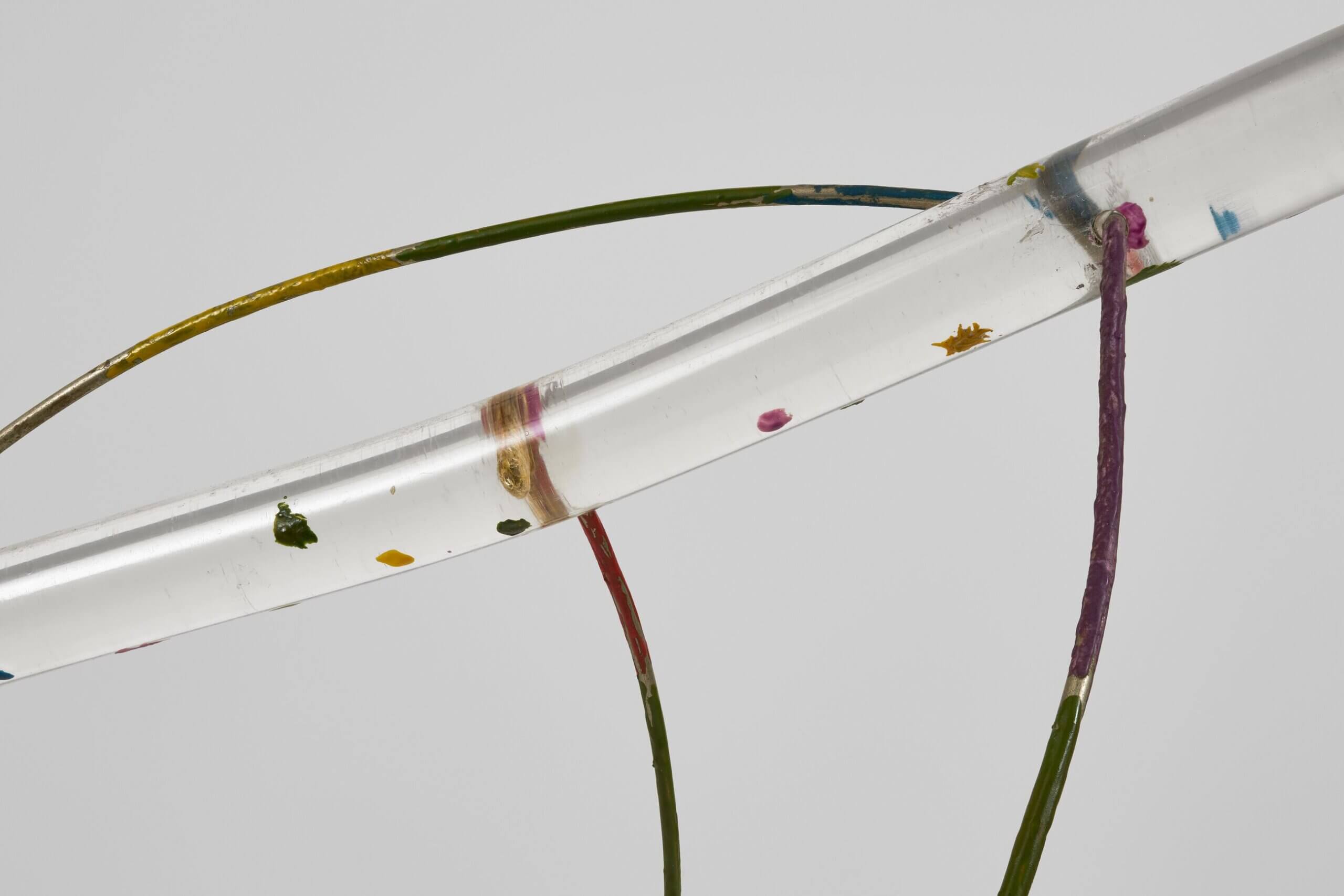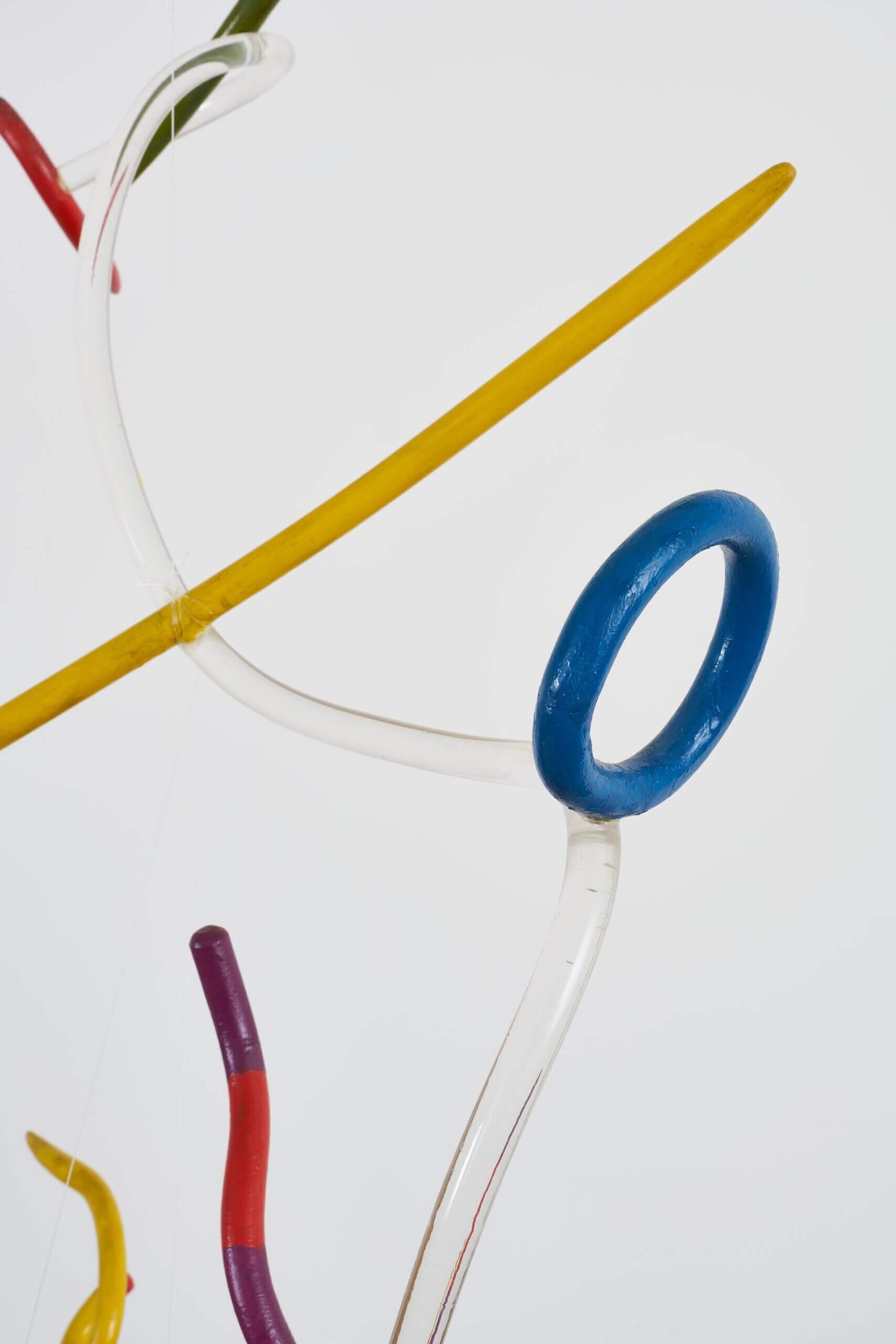
Georges Vantongerloo
Couleur dans l'espace
(Colours in space)
Couleur dans l'espace
(Colours in space)
1951 Plexiglas, oil paint 78.5 x 57 x 26 cm / 30 7/8 x 22 1/2 x 10 1/4 in
‘Space contains a number of qualities. It expands in all directions. It is without limits. It is uninterrupted, which means that a volume occupies a part of the void; and a void and volume make space. The great truth, the absolute truth, makes itself visible to our mind by means of the invisible.’
Champ magnétique
(Magnetic Field)
1951 Colored Plexiglas, nickel wire 35 x 26 x 15 cm / 13 3/4 x 10 1/4 x 5 7/8 in
Georges Vantongerloo
Working across painting, sculpture, architectural design, photography, and writing, Georges Vantongerloo presented a new vision of the world in the 20th century. Born in the age of the paraffin lamp, Vantongerloo experienced a reality wholly redefined by scientific discovery: by developments, both optimistic and tragic, in atomic physics; by the emergence of plastics with all of their material and economic potential; and by the cosmological and mathematical findings that laid the groundwork for the 1957 launch of Sputnik and the space race. The artist was inspired and invigorated by these discoveries as well as by what remained unknown, the to-be- discovered. 'As matter is transformable, energy is also transformable, but not always measurable by our means', he wrote in 1954. 'The universe is neither finite nor infinite; immeasurable, it is energy formed by unlimited energy'. [2]
Vantongerloo’s oeuvre metamorphosed as it grappled with the ever-shifting phenomenological effects of these ongoing findings. His mature work has increasingly become a subject of academic interest and institutional exhibitions. Significant sculptures like the 1951 'Couleur dans l'espace (Colours in space)', and related works at the Centre Pompidou in Paris and the Kröller-Müller Museum in the Netherlands, evince a lifetime of aesthetic, personal and intellectual development. Yet, they also embody a lifelong goal: to render the invisible visible, to translate the universe on the artist's own aesthetic terms. In 1917 Vantongerloo was a founding member (and the youngest member) of De Stijl, writing critical theory and making strictly geometric art alongside pioneering abstractionists like Theo van Doesburg and Piet Mondrian.
Over time, Vantongerloo's three-dimensional works developed from compact sculptures of subtraction into simpler volumes with projecting parts and empty space in between, relating the sculpture with the surrounding space. In 1928, he cofounded the Cercle et Carré group, and then in 1931 cofounded and served as the vice president of the Abstraction-Création group, which included artists like Piet Mondrian, Hans Arp, Wassily Kandinsky, and Vantongerloo's dear friend Max Bill. In 1937, Vantongerloo's art would come to a significant turning point. Largely working in oil on Masonite, he began to incorporate curved lines into his rectilinear compositions, to a freer effect. One painting from this period, 'Relation of Lines and Colours' (1939) at the Museum of Modern Art in New York, has uncanny visual resonance with the three-dimensional 'Couleur dans l'espace (Colours in space)', which would be made over a decade later.
When World War II came to a close in 1945, Vantongerloo's work leapt into three dimensions and turned its focus from the geometric and mathematical to the scientific and cosmological—a shift embodied by 'Couleur dans l'espace (Colours in space)', which was notably included in the major traveling retrospective of Vantongerloo's work in 1980–1981. 'Couleur dans l'espace (Colours in space)' embodies what Max Bill described as the artist's 'quest for relationships for [sic] structure and universal colour values'. [3]
The work has a fluid, dynamic composition. Its slim, tubular components play with the ability of a void to form a volume, and vice versa. Brightly coloured sections—in 1918 Vantongerloo expanded beyond the De Stijl palette of primary colours and introduced additional hues like purple—are juxtaposed against clear sections, giving them the appearance of floating in space. Vantongerloo made the sculpture using a medium essential to his practice at the time: the modern material of coloured Plexiglas. The acrylic resin was introduced for industrial functions in the mid-1930s; by 1950, it had become the artist's hallmark. The material qualities that are distinct to the Plexiglas were ideal for Vantongerloo's explorations. It had the ability to be both clear and coloured, or interspersed with coloured zones; to refract or reflect or diffuse light, or exist outside of light; to change its appearance at different angles, open-ended and endlessly metamorphosing. Through the Plexiglas lines, curves and loops of 'Couleur dans l'espace (Colours in space)' Vantongerloo could simultaneously grapple with the scientific and aesthetic inquiries that were so central to his practice, as he analysed the relationship between colour, light, and space.
[1] Georges Vantongerloo in his 'Reflections', written in The Hague in 1917. The first portion of the text was published in no. 9/1 of the De Stijl journal in July 1918. [2] Georges Vantongerloo in 1954, quoted in Guy Brett, Yve-Alain Bois, Gutemie Maldonado (et al.), 'Georges Vantongerloo. A Longing for Infinity', Madrid/ES: Museo Nacional Centro de Arte Reina Sofia, 2009, p. 208. [3] Max Bill quoted in Ibid., p. 168.
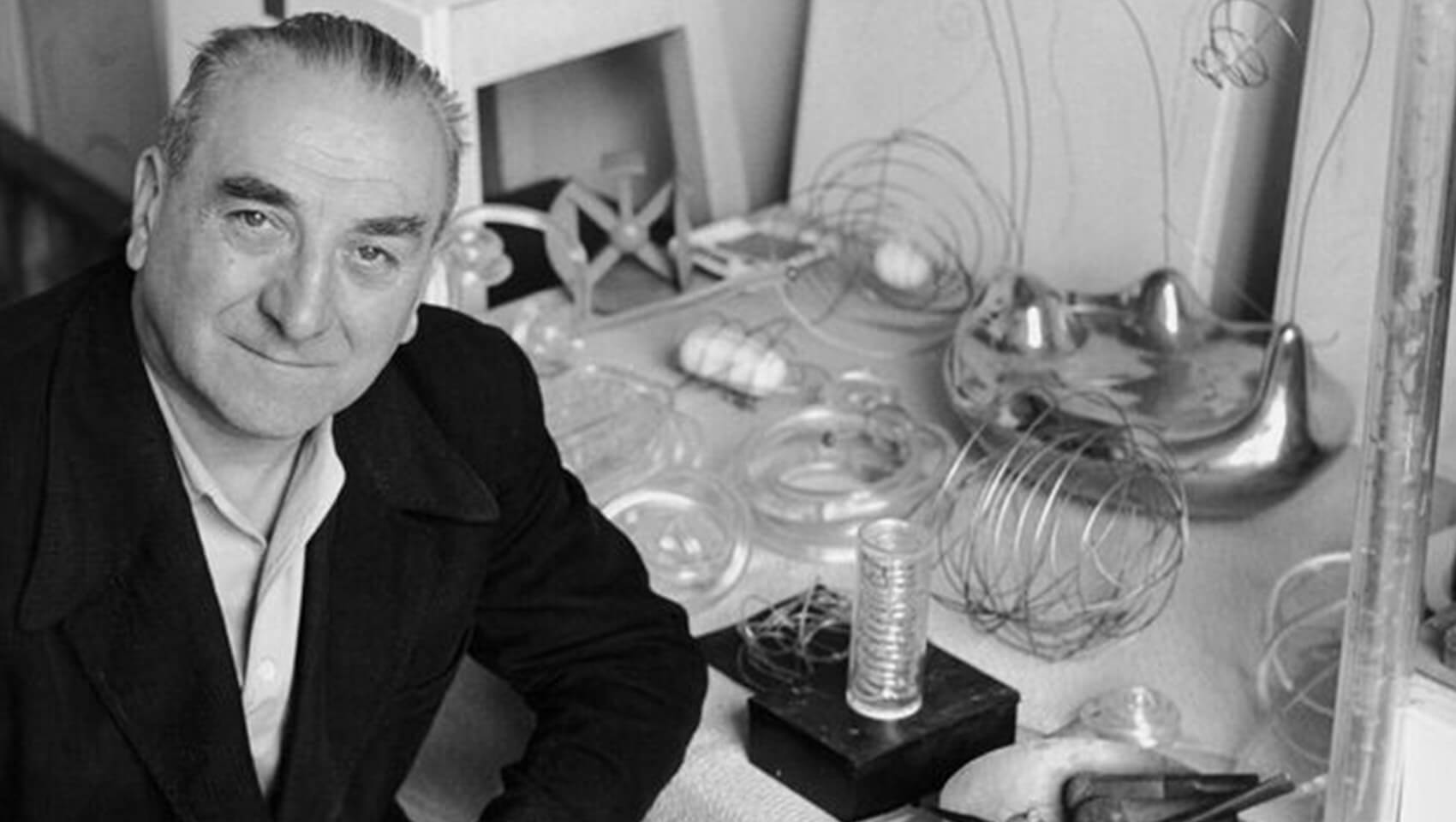
Georges Vantongerloo, born in Antwerp, Belgium, was an artist, architect, and theorist who became a member of the De Stijl group. While living in Holland and working on architectural designs during the years of World War I, Vantongerloo became part of the circle of Piet Mondrian, Bart van der Leck, and Theo van Doesburg, who founded the magazine ‘De Stijl’ in 1917. Soon after his return to Brussels in 1918, he moved to France, where he met Max Bill, who would become a lifelong friend and the organizer of many Vantongerloo exhibitions. In 1924 Vantongerloo published his pamphlet ‘L’Art et son avenir’ and in 1931 joined the Abstraction-Création group.
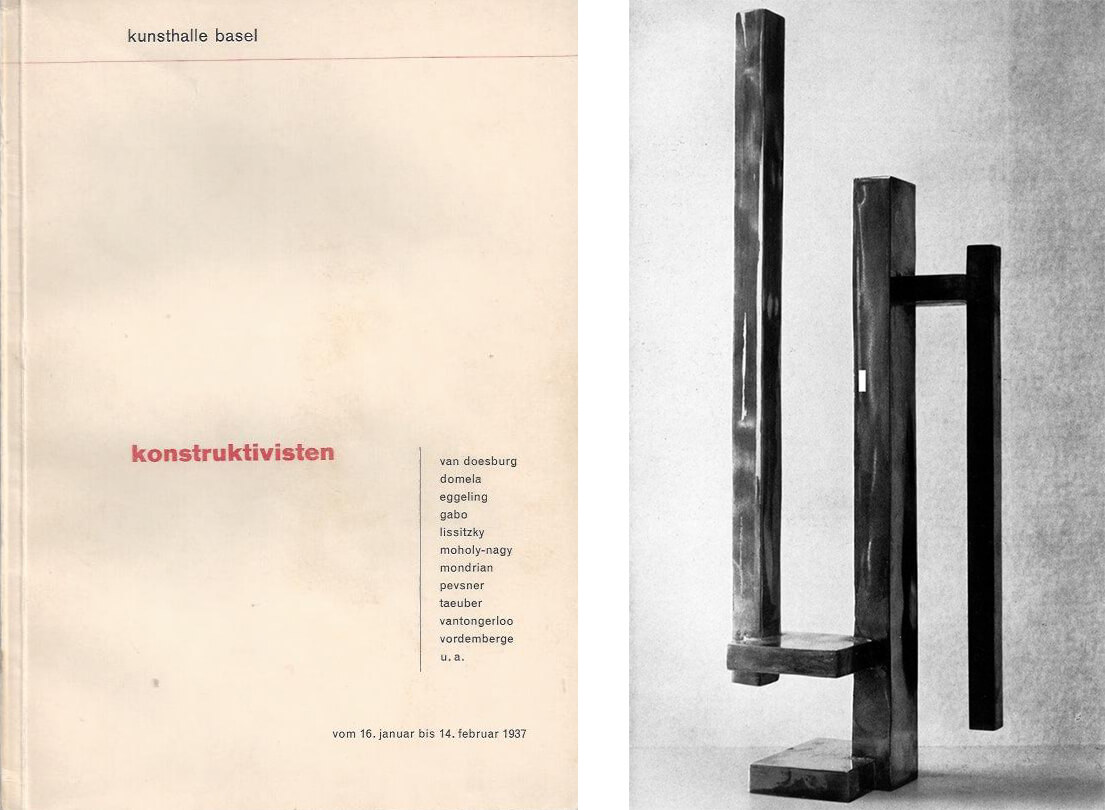
Celebrating Basel Basel
Vantongerloo’s work arrived in Basel for group shows in 1937 and 1944 in ‘Konkrete Kunst’ and ‘Konstruktivisten’ at Kunsthalle Basel. In ‘Konkrete Kunst’, his metal work ‘Sculpture in Space (y=ax³-bx³+cx)’ from 1935 was included alongside work by Taeuber-Arp, Hans Arp, Max Bill, and other members of the Abstraction-Création group formed in 1931.
